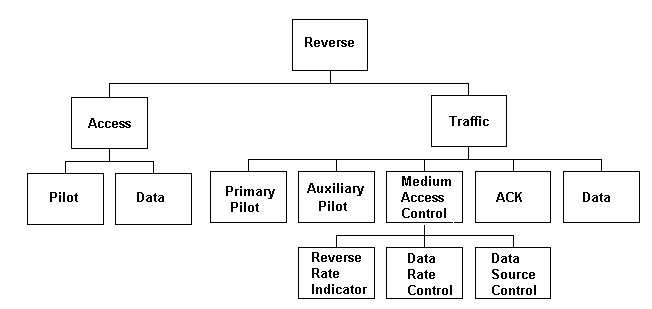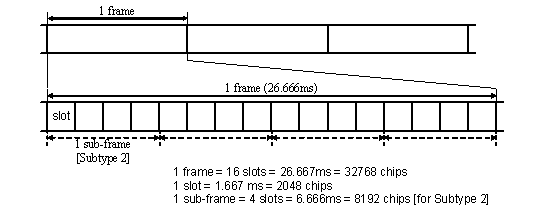About 1xEV-DO Rev A
A successor to 1xEV-DO Release 0, CDMA2000 1xEV-DO Rev A offers improved peak data rates on both the forward and reverse links. On the forward link, peak data rates increase to 3.1 Mbps, while reverse link peak speeds have increased to 1.8 Mbps. Rev A also offers higher sector capacity within the same 1.25 MHz carrier, allowing operators to support more users and richer applications. New physical layer protocols provide increased capacity and flexibility.
RF Characteristics
1xEV-DO Rev A uses the same final spread rate of 1.2288 Mcps as does IS-2000 1x and 1xEV-DO Release 0. The same digital output filter is used to maintain spectral compatibility with IS-2000 1x and 1xEV-DO Release 0. Like 1xEV-DO Release 0, 1xEV-DO Rev A cannot be overlaid with IS-2000 channels. Each 1xEV-DO channel requires a paired 1.25 MHz clear channel. While 1xEV-DO Rev A fully supports 1xEV-DO Release 0 (superset), the new physical layer defined in Rev A cannot be overlaid on the same channel with a 1xEV-DO Release 0 physical layer system.
Forward Link Channel Structure
The new features of the subtype 2 forward link include ARQ channels used to signal the reception of the new high speed reverse traffic channel, variable physical layer packet sizes, more transmission configurations, lower data rates and one higher data rate, slower reverse power control bit stream, and more available MAC indexes.

Subtype 2 Forward Link Physical Layer
The subtype 2 forward link physical layer has several modifications relative to the subtype 0 physical layer. New ”r;short” packet sizes are defined to be 512 bits, 256 bits, or 128 bits. As the data rate rises, the packet size is increased from 1024 bits up to 2048 bits, 3072 bits, 4096 bits, and 5120 bits. The increased number of available physical packet sizes results in lower data rates for subtype 2 (4.8 kbps, 9.6 kbps, and 19.2 kbps) as well as two new high data rates (1,536 kbps and 3,072 kbps). In subtype 2, there is a one-to-one correspondence with the MAC layer packet size and the physical layer packet size unlike subtype 0, where the MAC packet size is always fixed to 1024 bits and multiple MAC packets are required to fill up the larger physical layer packets.
Forward Link Frame Structure
The frame structure for subtype 2 physical layer operations is the same as is used for subtype 0. The frame period is still based on the pilot channel, which has a period of 26.667 msec.

Forward Link Slot Structure
Each frame is divided up into 16 slots of 1.667 msec. One control channel cycle is defined to be a 256 slot period, synchronous with CDMA system time where there is an integer multiple of 256 slots between the beginning of a cycle and the beginning of CDMA system time.
Reverse Link Channel Structure
The subtype 2 Reverse Access channel is only slightly modified from the subtype 0 configuration and is essentially the same as subtype 1. However, the subtype 2 Reverse Traffic channel has many changes in the definitions of the Reverse Pilot, Reverse Rate Indicator, Reverse ACK, and Reverse Data channels, and introduces two new reverse channels.
-
The Reverse Data Source Control channel indicates the desired forward link serving cell which minimizes service interruption due to server switching on the forward link.
-
The Reverse Auxiliary Pilot channel is used instead of adding power to the Reverse Pilot so that other reverse link channels will not scale their power as the power energy increases.

Subtype 2 Reverse Link Physical Layer
The reverse link of the subtype 2 physical layer has more changes relative to the original subtype 0 physical layer than the forward link. Subtype 2 introduces much higher and lower data rates (up to 1.8 Mbps and down to 4.8 kbps), and two new modulation formats (QPSK and 8-PSK).
Reverse Link Frame Structure
In subtype 2 operation, the Reverse Data channel uses a new timing structure. The frame and slot timing is the same as subtype 0 (each 26.67 ms frame consists of 16, 1.667 ms slots), but the concept of the subframe is introduced. Each subframe consists of four contiguous slots (6.667ms). Also new is the concept of a subpacket. A subpacket is defined to be the smallest unit of a reverse traffic channel transmission that can be acknowledged at the physical layer by the access network. A subpacket is transmitted over four contiguous slots, thus a subpacket is transmitted in one subframe. Each physical layer packet can be transmitted in up to four subpackets. When more than one subpacket is required to successfully transmit the physical layer packet, the transmitted subpackets use a three subframe interlace pattern. The subtype 2 Reverse Data channel also uses five modulation schemes as opposed to the single scheme used in subtype 0 operation.

